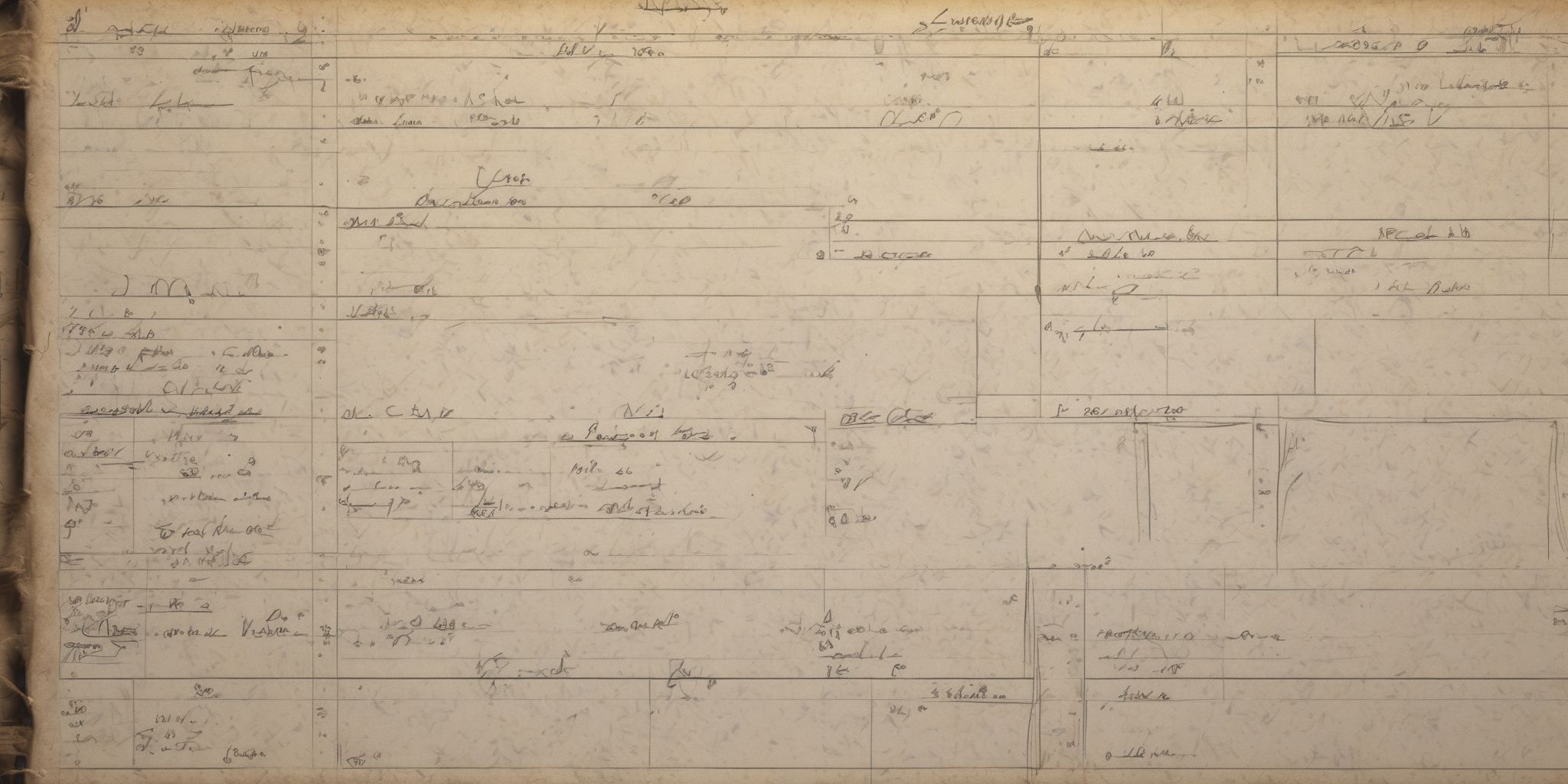The Ultimate Guide to Using Expenses Vouchers for Hassle-Free Budgeting
Are you tired of constantly grappling with your finances, trying to keep track of every penny you spend? Do you wish there was a magical tool that could make budgeting a breeze? Well, look no further! In this ultimate guide, we will unravel the secrets of using expense vouchers for hassle-free budgeting. So, whether you're a seasoned budgeting pro or a novice trying to get your financial ducks in a row, get ready to embark on a journey towards financial freedom.
Say goodbye to the headaches of budgeting and hello to a stress-free financial future!
What are Expenses Vouchers?
Definition
- An expenses voucher is a document used to record and track expenses incurred by individuals or organizations.
- It serves as a proof of purchase for reimbursements or as a record for financial tracking purposes.
- Expenses vouchers typically include details such as the date of the expense, the amount spent, the nature of the expense, and any supporting documentation, such as receipts or invoices.
- They can be in the form of physical paper documents or electronic files, depending on the preference and processes of the organization.
- Expenses vouchers play a vital role in maintaining accurate financial records and ensuring proper allocation of funds.
- By using expenses vouchers, individuals and organizations can maintain transparency, prevent fraudulent expenses, and streamline the budgeting process.
Purpose
The purpose of expenses vouchers is to provide a clear and documented record of financial transactions related to business expenses. They serve as a formal way to track and reconcile expenses, ensuring accurate and transparent financial reporting. By using expenses vouchers, individuals and organizations can maintain organized records of their spendings, which aids in effective budgeting, tax compliance, and auditing processes.
It helps businesses monitor their expenses, identify areas for cost-cutting, and make informed financial decisions. Expenses vouchers also play a crucial role in reimbursing employees for their out-of-pocket expenses or claiming business-related deductions.
Benefits of Using Expenses Vouchers
- Efficient Expense Tracking: Expenses vouchers provide a systematic way to track all your expenses in one place, ensuring you don't miss any essential details.
- Improved Accuracy: By requiring you to fill out specific information, expenses vouchers help eliminate errors, ensuring the accuracy of your expense records.
- Simplified Reimbursement Process: Submitting expenses vouchers with proper documentation makes it easier for employers or accounting departments to process reimbursements promptly, saving you time and effort.
- Clear Audit Trail: Expenses vouchers create a clear paper trail, making it easier to trace and validate expenses during audits or tax season.
- Better Budgeting and Financial Planning: By regularly reviewing your expenses through vouchers, you can gain insights into spending patterns, identify areas for cost-saving, and make informed decisions for better budgeting and financial planning.
- Compliance with Regulations: Using expenses vouchers ensures adherence to company policies, legal requirements, and tax regulations, maintaining transparency and compliance.
How to Properly Use Expenses Vouchers
Step 1: Understanding the Voucher Format
- Familiarize yourself with the layout and sections of an expenses voucher.
- Typically, a standard expenses voucher includes fields for the date, description of expense, amount, and category.
- It may also require additional information such as the employee's name, department, and supervisor's signature.
- Learning the voucher format ensures accurate and organized expense reporting.
- Take note of any specific guidelines provided by your organization concerning voucher completion.
- By understanding the voucher format, you can easily navigate the process of filling it out correctly, saving time and reducing errors.
Step 2: Gathering Receipts and Documentation
To properly use expenses vouchers, gathering receipts and documentation is necessary for effective expense tracking. Keep receipts for all expenses incurred, such as meals, transportation, or office supplies.
Obtain digital copies or take photos of physical receipts, making it easier to digitize and store them securely.
Additionally, ensure that the receipts include detailed information such as date, vendor name, items purchased, and total amount.
Organizing receipts by category or month further streamlines the process and allows for easy retrieval when filling out the expenses voucher.
Step 3: Filling out the Voucher Correctly
When filling out an expenses voucher, it is important to follow certain guidelines for accuracy and efficiency. Here are some tips for filling out the voucher correctly:
- Include all necessary information such as the date, purpose of the expense, and vendor details.
- Use clear and legible handwriting to avoid any confusion or misinterpretation.
- Double-check calculations to ensure accuracy in claiming expenses.
- Attach relevant receipts to support your claims and provide proof of the expenses.
- Be specific and concise in describing the expenses, avoiding vague or generalized terms.
- If using digital vouchers, ensure all fields are filled out correctly before submission.
By adhering to these practices, you can streamline the process and ensure hassle-free reimbursement for your expenses.
Include Accurate Information
Including accurate information on your expenses voucher is vital for maintaining transparent and reliable budgeting records. Make sure to provide all necessary details, such as the date of the expenditure, the vendor's name, the amount spent, and the purpose of the expense. Inaccurate or incomplete information can lead to confusion and potential errors in your financial management.
For example, specifying "Office Supplies - Printer Ink" instead of simply "Supplies" offers clarity and facilitates expense tracking. By being specific and accurate, you can easily analyze your spending patterns and make informed decisions for better budget management.
Attach Relevant Receipts
Including the relevant receipts with your expenses voucher is vital. It provides concrete evidence of your expenses and helps validate your claims. By attaching receipts, you can avoid any potential disputes or questions regarding the authenticity of your expenses.
For example, if you're claiming a meal expense, attaching the restaurant receipt serves as proof of your expenditure. Similarly, attaching a receipt for a business-related purchase helps substantiate the expense.
Make sure the receipts are clear, legible, and include all necessary details such as the vendor name, date, items purchased, and total cost. This ensures smooth processing of your expenses voucher and allows for easier tracking and auditing of your expenses.
Step 4: Submitting the Voucher
When submitting the expenses voucher, accuracy and completeness are vital. Double-check all the information on the voucher before submitting to avoid delays or rejections. Attach all the relevant receipts and supporting documentation to ensure a smooth process. Make sure to follow any specific submission guidelines set by the company or organization.
For example, some may require physical copies while others accept digital versions. By submitting the voucher promptly and correctly, you can expedite the reimbursement process and maintain efficient budgeting practices.
Tips for Effective Expense Tracking with Vouchers
Keeping Vouchers Organized
Keeping your expenses vouchers organized is vital for efficient budgeting. Start by digitizing your vouchers to easily access and search for them. Categorize your expenses into different folders or tags, such as transportation, meals, or office supplies. This allows for quick retrieval and analysis of specific expenditure types.
Additionally, regularly review and reconcile your vouchers to detect any discrepancies or errors promptly. By implementing these organizational practices, you can effortlessly track and manage your expenses, enabling you to make informed financial decisions.
Digitize Your Vouchers
Digitizing your vouchers is a game-changer when it comes to expenses management. Here's why:
- Efficiency: Say goodbye to the hassle of sorting through paper vouchers. By digitizing them, you can easily search, organize, and retrieve vouchers with just a few clicks.
- Accessibility: Storing vouchers electronically means having access to them anytime, anywhere. No more digging through physical files or worrying about misplacing important documents.
- Enhanced Analysis: Digital vouchers allow for seamless integration with expense tracking software. This enables you to generate insightful reports, identify spending patterns, and make data-driven decisions.
- Sustainability: Going digital reduces paper waste and supports environmental sustainability efforts. It's a win-win for your budget and the planet.
Remember, there are various tools available, such as scanning apps or cloud-based storage solutions, to help you streamline the digitization process.
Categorize Expenses
Categorizing expenses is an important aspect of using expenses vouchers effectively. By organizing your expenses into categories, you can gain better visibility into your spending habits and make informed budgeting decisions. Here are some tips for categorizing expenses:
- Create broad categories such as "Food", "Transportation", and "Entertainment".
- Use subcategories within each main category to provide more detailed insights.
- Consider using labels or tags to further differentiate expenses within a category.
- Regularly review and adjust your categories to reflect any changes in your spending patterns.
For example, under the "Food" category, you can have subcategories like "Groceries", "Dining Out", and "Coffee Shops". This allows you to see how much you're spending in each subcategory and identify areas where you may need to cut back.
Regularly Reviewing and Analyzing Expenses
Regularly reviewing and analyzing expenses is vital for effective budgeting. By examining your expenses on a consistent basis, you can identify patterns and make necessary adjustments. Look for areas where you can reduce costs or reallocate funds to more important categories.
For example, if you notice a significant portion of your expenses going towards dining out, consider meal planning and cooking at home more often.
Additionally, analyzing expenses helps you understand your spending habits and gives you a clearer picture of where your money is going. It enables you to make informed decisions and prioritize your financial goals.
Utilizing Expense Tracker Apps
Expense tracker apps offer a convenient way to manage expenses and track spending using digital vouchers. These apps provide a centralized platform for capturing and organizing receipts, categorizing expenses, and generating expense reports. With real-time updates, users can easily monitor their spending patterns and stay within budget. Some apps even offer features like OCR technology to automatically extract information from receipts, saving time and effort. By leveraging expense tracker apps, individuals can easily access their expense history, gain insights into their spending habits, and make informed financial decisions. It's like having a personal financial assistant at your fingertips.
Common Mistakes to Avoid
Incomplete or Inaccurate Information
Incomplete or inaccurate information on expenses vouchers can lead to unnecessary delays and complications in the reimbursement process. It is crucial to provide precise details, such as dates, descriptions, and amounts, to ensure proper record keeping and reconciliation.
For example, failing to specify the purpose of a business meal or not including the vendor name on a receipt can raise questions and potentially cause reimbursement issues. Always double-check your entries and attach all necessary supporting documents to avoid any discrepancies. Remember, accuracy and completeness are vital to streamline the expenses voucher process and avoid unnecessary hassles.
Forgetting to Collect Receipts
- Collecting receipts is a vital aspect of using expenses vouchers effectively.
- Without receipts, you may face difficulty in verifying expenses and may not be able to claim reimbursement or tax deductions.
- Make it a habit to request and retain receipts for all expenses related to your work.
- Store them in a designated folder or use a digital scanning app to maintain an organized record.
- By consistently collecting receipts, you can ensure accurate reporting and avoid potential issues during audits or expense reconciliations.
Delayed Submission of Vouchers
Delayed submission of expenses vouchers can have negative consequences for effective budgeting. When vouchers are not submitted promptly, it becomes challenging to track and analyze expenses accurately. This delay can result in missed reimbursement deadlines, financial discrepancies, and difficulties in reconciling accounts.
Additionally, it can lead to a lack of transparency and hinder the overall financial planning process. For instance, if a business fails to submit employee expense vouchers in a timely manner, it may encounter difficulties in assessing its current financial position. To avoid these issues, it is crucial to prioritize the timely submission of expenses vouchers to maintain an accurate and up-to-date budgeting system.
Wrapping up
Are you tired of struggling with your budget? Look no further! This ultimate guide on using expenses vouchers will help you breeze through budgeting. Learn how to effectively track your expenses, save money, and avoid overspending. With this hassle-free method, you'll have complete control over your finances. Say goodbye to financial stress and start budgeting like a pro!


